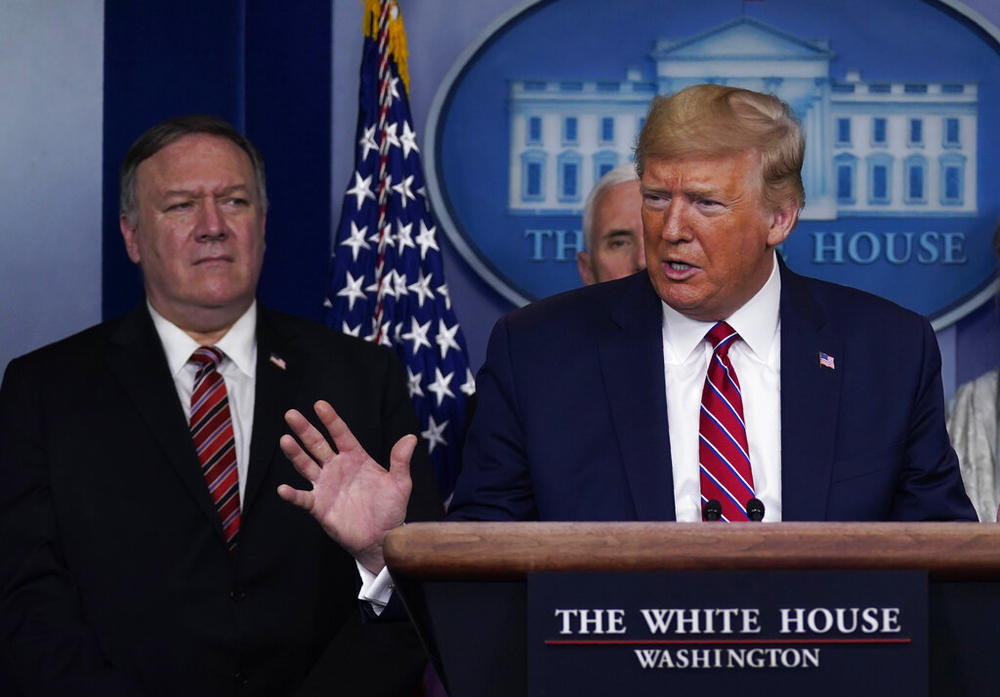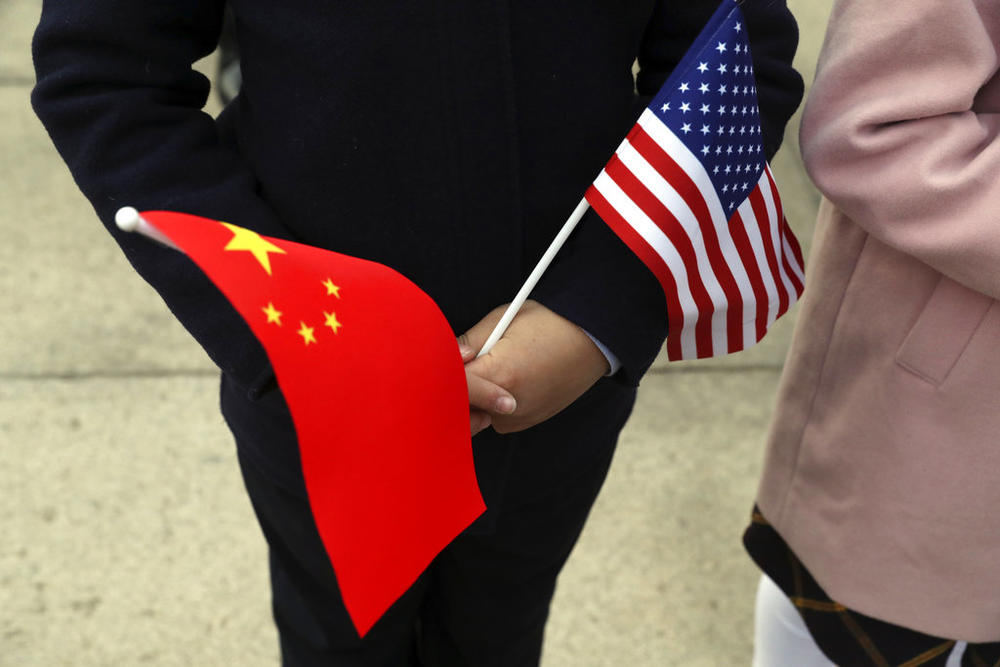
Caption
In this March 20, 2020, file photo, with Secretary of State Mike Pompeo to the rear, President Donald Trump speaks during a coronavirus task force briefing at the White House. The Trump administration Trump and Secretary of State Mike Pompeo have repeatedly said they suspect the virus was somehow released from a Chinese laboratory — a claim that has amplified racist animus against Chinese students living and studying abroad in America.
Credit: AP Photo/Evan Vucci, File



